Mushroom platype lilac-legged: photo and description, places and season of gathering
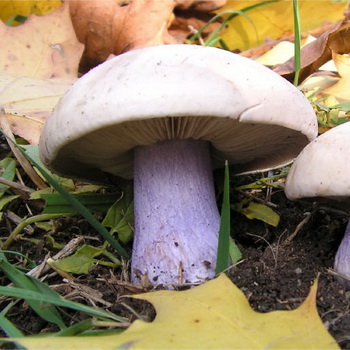
The fungus is lilac-legged is considered an edible fruiting body, although little known in the circle of mushroom pickers. These fruiting bodies got their name because they grow in rows, closely clinging to each other. Sometimes it can be observed that one mushroom completely or partially covers the head of its "comrade".
Content
Where and when to pick blue root mushroom
The blue leg leg mushroom prefers to grow on alkaline soils found in meadows, forest glades, in areas of abandoned farmland or on pastures throughout Russia. Check out the photo visualizing the row of the blue leg:
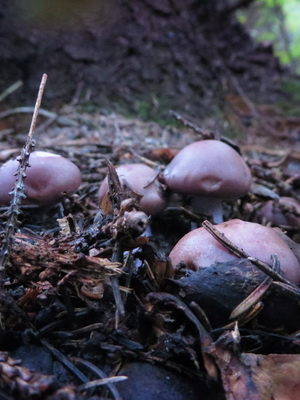
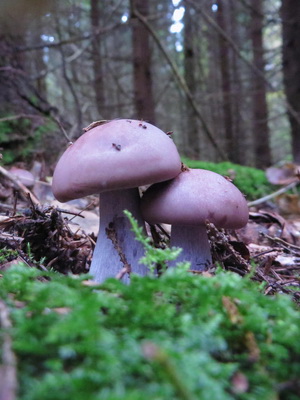
This surprisingly beautiful mushroom grows in large colonies, in the form of rows or, as the people often say, “witch circles”. The row of the blue foot is widespread in Russia, as well as in European countries. In addition, it is found in the forests of North and South America.
The harvesting season and the active fruiting of the fungi of the blue-legged rowads occur in early autumn, that is, in the month of September. Mushroom pickers with experience recommend novice fans of the "silent hunt" to collect these fruiting bodies only in dry weather, since during rains they become slippery and sticky. Look at the proposed photo of the lilipod rowing, showing under what conditions it grows and what it looks like during the harvest:
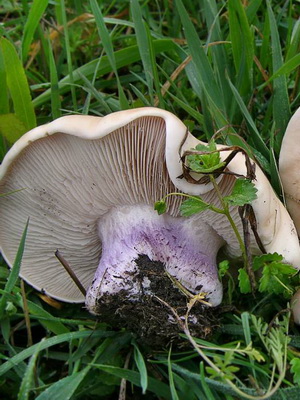
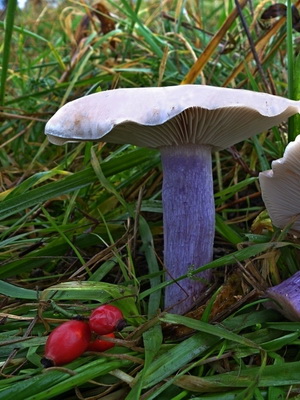
Even despite the strange specific color, which scares away many, the order of the lilac-legged has its fans. Having once tasted it, mushroom pickers immediately join the lovers of these mushrooms. Having found rowers in the forest, they will surely collect them in their baskets. Then you can cook a variety of delicious and aromatic dishes from them.
It is worth saying that the two-color rowing (we offer a photo for familiarization) belongs to the Ryadovkov family, which has a large number of species:
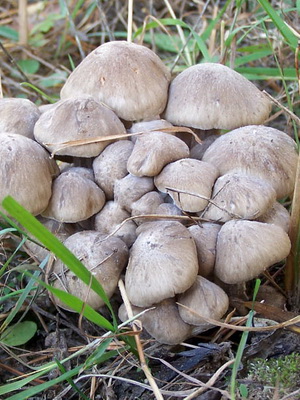
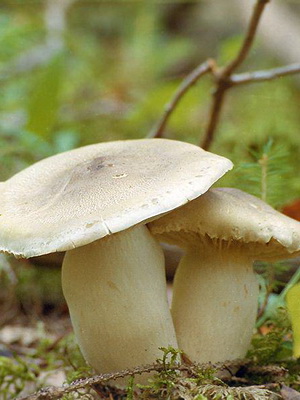
crowded row, poisonous,
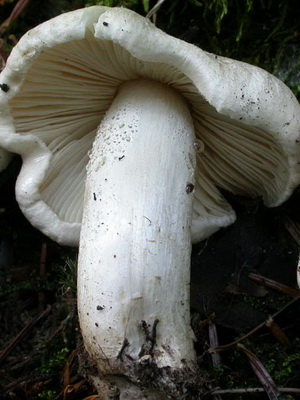

brindle, white lepista,
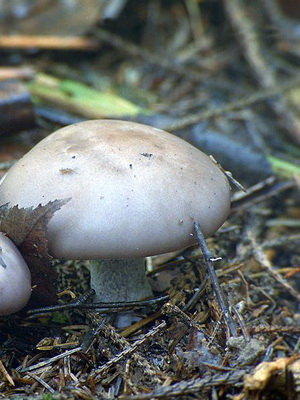
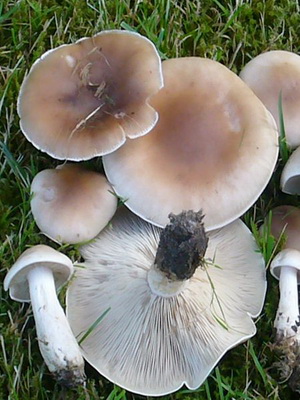
gray lepista and etc.
Beginner mushroom pickers are very interested in the question: where and when to collect the blue root? First of all, pay attention to the photo and description of the lilac-leg mushroom mushroom and compare it with the photo and description of the blue root mushroom.
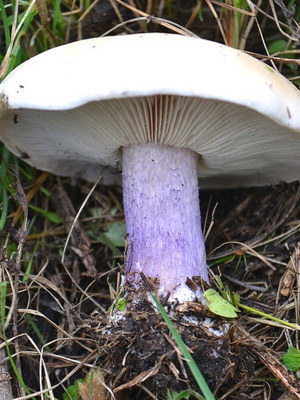
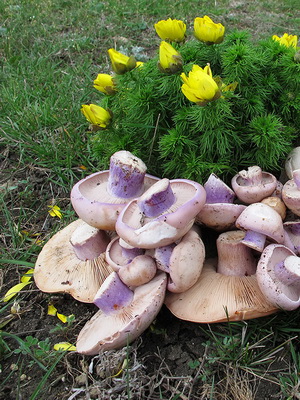
As you can see, this is one and the same representative. These mushrooms grow near rivers and lakes, near cattle-breeding farms right in the grass, in meadows and pastures.The growth of these fruiting bodies begins from mid-April to early June, and then continues from the end of August until the first frosts. Sometimes mushroom pickers for 2 months harvest 2 crops. A photo of the blue root mushroom will help you determine how this fruiting body looks, as well as the places that this mushroom prefers:
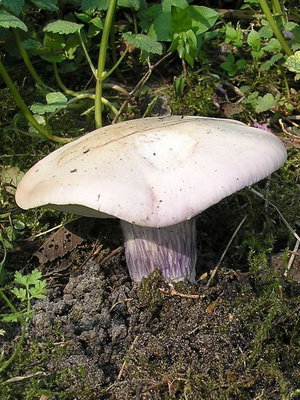
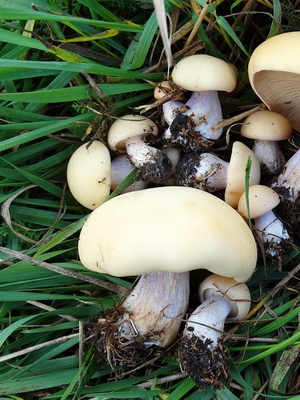
It is worth saying that among the ranks of the lilipods there are inedible species, although there are no deadly poisonous ones. The worst thing that can happen is a long digestive upset: diarrhea, weakness, abdominal pain and even loss of consciousness. Symptoms of poisoning can begin in just 30 minutes and no later than 2 hours after the mushrooms have been eaten. The disease can last from 3 days to 1 week and usually ends in recovery.
Mushroom blue root (two-color rowan, blue foot): photo and description
In order to distinguish poisonous species when picking mushrooms, we offer a photo and description of the order of the lilac-legged.
Latin name: Lepista saeva, Lepista personata.
Family: Ordinary (Tricholoma).
Gender: Ryadovki.
Synonyms: row of the blue foot, row of the blue leg, mushroom blue root, row of the two-tone.
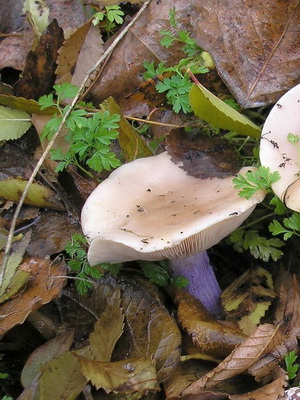
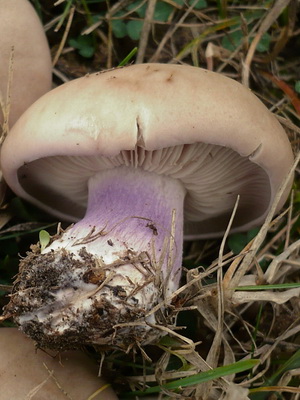
Hat: has a diameter of 6 cm to 15 cm. Sometimes there are very huge specimens that reach a diameter of up to 25 cm. The shape of the hat resembles a pillow-shaped or flat-convex. To the touch, its surface is very smooth, with a yellowish or slightly purple hue. Spore powder has a pale pink or yellowish color.
Pulp: dense, fat at a young age, and loose in a mature one. The color is gray-violet, less often it is gray or gray-brown. Often the pulp has a pleasant fruity aroma and has a sweetish flavor. The fungus is resistant to frost, its growth continues even at a temperature of -6 ° C.
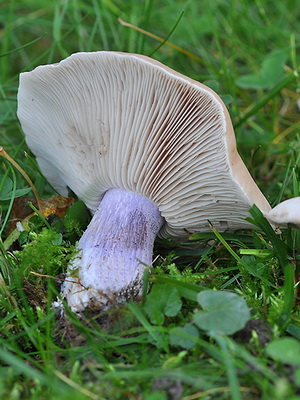
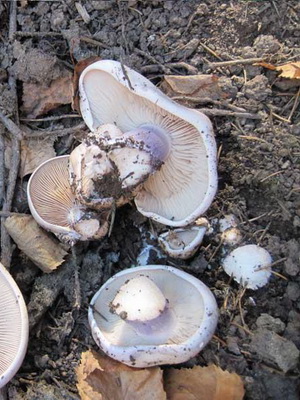
Records: the hymenophore is a plate type. The plates are often and freely located, have a large width, vary in color from yellowish to cream shades.
Leg: flat, has a slight thickening at the base. A photo and description of two-color rowing will help you find out the features of the legs of this fruiting body. The length can reach from 5 cm to 12 cm, with a thickness of up to 3 cm. In young specimens, the legs along the entire surface are covered with the remains of the bedspread (flakes) and a fibrous structure is noticeable. After full ripening, the surface of the leg of the two-color rowing becomes completely smooth. Consonant with its name, it has a grayish-purple or light purple hue. Sometimes it can be more blue, which is the hallmark of the order of the lilac-foot.
Application: is a delicious mushroom used for all processing processes. Great for pickling, pickling, drying and freezing. It looks good as a side dish for meat and fish dishes.
Edibility: the mushroom is edible and delicious.
Spread: grows throughout Russia, preferring meadows, pastures, compost heaps and margins of deciduous forests, which are dominated by trees such as ash, stingy, birch and aspen. Mass gathering of lilac-leg rowing usually occurs in the fall. However, the fungus begins fruiting from spring to the end of autumn, preferring open, illuminated and at the same time moist places.
Where does the meadow lilac-leg (bicolor) grow?
Very tasty and popular among mushroom pickers - the meadow is lilac-legged. Its name speaks for itself, because it grows on pastures and meadows. In terms of taste and properties, this fruiting body resembles mushrooms. In the marinade, the rowing takes on a snow-white appearance and amazing taste. However, experts believe that the rowan meadow and lilac-legged are one and the same species of mushrooms.
Where does the lilac-legged grow and what places does it prefer to grow? Everything will depend on soil and climatic conditions. Rowing plants grow on all kinds of soils, and if the weather is favorable, then the yield of these fruiting bodies will be great.In addition, the row of lilac-legged can be found in urban forest parks, on personal plots. The mushroom is unpretentious, it would be warm and humid. Often it can be seen in coniferous forests and forest plantations, in which sandy soil prevails. They also prefer semi-sandy and humus soils. They grow even on fallen needles and rotted foliage.


The two-colored rowing is widespread in the temperate zone of the Northern hemisphere, in Kazakhstan, the Black Sea region and in the European part of the Russian Federation. But we must not forget that even the edible types of rowing, which are collected in the city or near industrial enterprises, are much more toxic than their meadow and forest counterparts. Very often, such mushrooms are the cause of poisoning.
When to collect a row of lilac-legged so that it is not overgrown and retains all the useful vitamins and properties? I want to say that these fruiting bodies, especially those growing in the southern regions of the country, can produce 2 crops per year. The first appears in the spring and lasts until the beginning of autumn, and the second begins from the end of summer and continues until the first frost, that is, almost until the month of November. Under favorable weather conditions and with the correct cutting of rowers, mushroom pickers can collect these fruiting bodies in the same place for several years. Mushroom pickers with experience, knowing such places and the fruiting dates of two-colored rowing, can collect from 100 to 150 kg of these mushrooms per season. Mushroom pickers love to collect it due to the dense pulp and resistance to transportation. Even having gathered a row in packages, you can not worry: while you bring home, it will not break.
The proposed photos and descriptions of the order of the blue foot will not allow inexperienced mushroom pickers to confuse this mushroom with another inedible species.
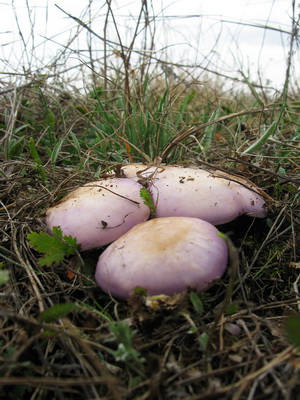

Fruit bodies are resistant to cold, so they can be found even in late autumn and even in the month of December. But other types of mushrooms do not have this ability, except winter mushrooms.
Lepidoptera collection tips (lepista saeva)
Experienced mushroom pickers give some useful tips for those who are going to a “silent hunt” for the first time regarding the collection of mushrooms of the order of the lilac-foot.
- Fruit bodies are best sought in lit forest glades, meadows and pastures. In the shady wilderness, these mushrooms are less common.
- Cut the lower part of the leg back in the forest, so that at home it takes less time to clean.
- Never try raw mushrooms, because edible can be easily confused with poisonous species.
- Aging specimens of rows of bruises before use must be properly cleaned: remove the lower spore-bearing layer of the hat, that is, the plate. The spores contained in ripe rowing plates are not digested and can cause poisoning.
- Before heat treatment, the blue root must be soaked in cold water for 40 minutes to rid the fruiting bodies of adhering dry leaves and sand. Then rinse 2 times in plenty of water, each time pouring clean water.
- When soaking, you should add a little coarse salt, which will save the mushroom from the worms.
- Do not use worms and rotten specimens as food, as they can cause severe digestive tract disorders in a person with impaired digestion.
In order for the lilac-leg rowing to retain its color and aroma during boiling, culinary experts advise adding a pinch of citric acid to the water for boiling.
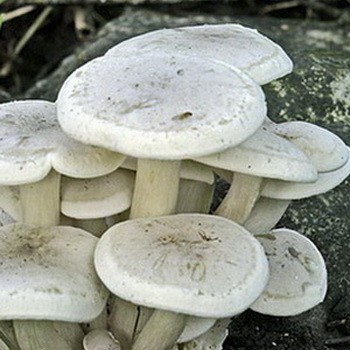
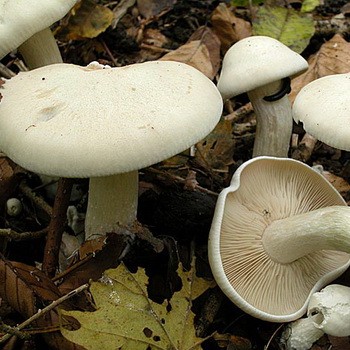
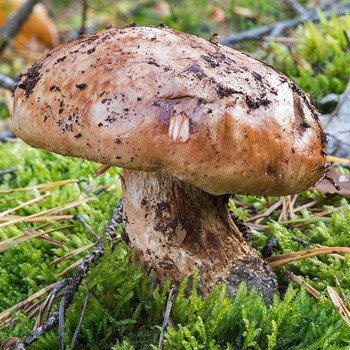
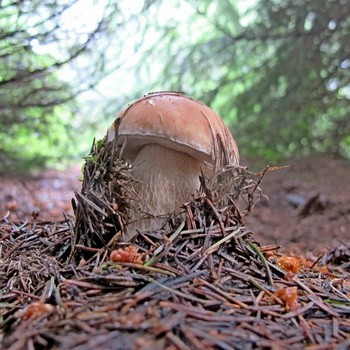
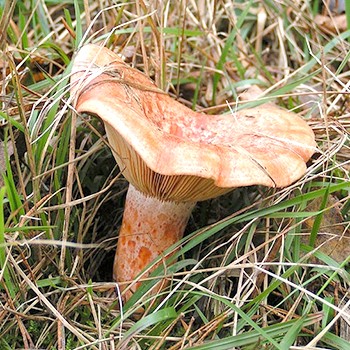


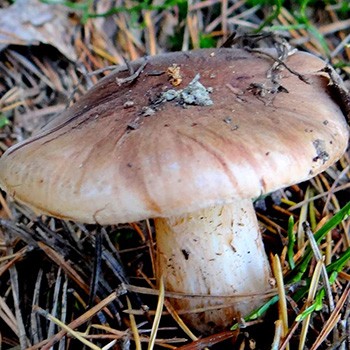
Properly stated, the article was very useful. I found a row, but I didn’t tear it, I didn’t see such a look, everything according to the description matches. I’ll go collect tomorrow, I’ll try. By the way, I still determine the mushrooms by smell, if I have a nasty smell, I do not contact them. And in this case, the smell of an edible mushroom.Next to it is a tree and oyster mushroom on it, only gray children appear in several places, I know this breed well, I wait for it to grow up. Good luck to all mushroom hunts
Only in the article about the inedible look of nothing at all. Thanks so much.
Thank. We collect these mushrooms for a long time